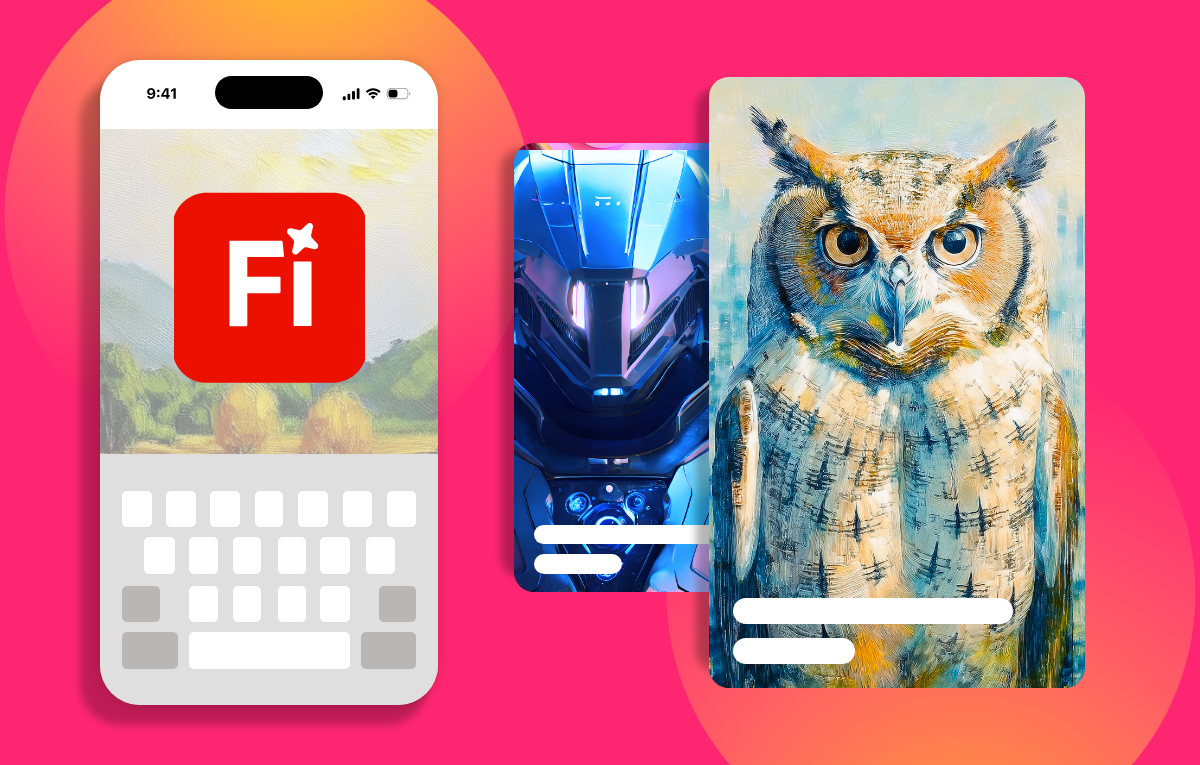
Good news, everyone! The Firefly app recently became available for Android and iPhone users.
The interface is very user-friendly, so anyone can use it. However, I’ll be covering all the basics here just in case you have any doubts.
I’ll cover each feature included on the app, but I’ll also explain how generative credit works and what the different plans and pricing options are.
This guide can help you use the app and your generative credits more efficiently. And, if you’re not an Adobe user yet, it can help you decide whether you should download the app.
Now, let’s dive into this awesome app that puts all the generative AI technology developed by Adobe at your fingertips.
All You Need to Know About the Adobe Firefly App for iPhone and Android
For transparency purposes, I wanted to say that I use an Android phone. So, all the screenshots I share and features I discuss are based on my experience using the Android app.
However, I haven’t found any disclaimers, advertising, or user comments that suggest that anything works differently on iPhones. So, even if you’re an iPhone user, this guide should be helpful to you as well.
In any case, please consider that Adobe can change prices, terms and conditions at any time. So, it’s always best to check for the official information on their website before subscribing.
What is Adobe Firefly?
Firefly is Adobe’s AI generative platform, featuring a range of AI models developed in-house.
You’ll also find a collection of third-party models that have partnered up with Adobe so you can have the best and most updated technology for your creations.
You can use Adobe Firefly as a standalone product both on your computer and your phone.
Firefly is also integrated into the Creative Cloud ecosystem. This means that whenever you’re using a generative AI tool, whether you’re inside Photoshop, Illustrator, or Adobe Express, it’s still powered by Firefly.
Using Adobe Firefly, you can generate commercially safe images, audio, video, vector graphics, and more.
Is the Adobe Firefly App Free?


Yes, Adobe Firefly can be used with a free Adobe account.
If you sign in with a free account, you’ll get 10 complimentary generations per month to use on the Standard features. Plus, you’ll get complimentary generations to try each premium feature. I’ll talk more about the different types of features further on.
If you have a Creative Cloud membership, you’ll have some credits included in your plan. For example, I have a Photography Plan and that gives me 250 credits per month – but they’re only for the standard features.
The number of credits you receive depends on your membership. Some plans include unlimited credits for Standard features, with limits only applying to Premium features. If you run out, you can always purchase a Firefly add-on plan.
Please consider that generative AI credits are used on all the Creative Cloud apps that you’re subscribed to. So, whether you use them inside Photoshop on your computer or in the Firefly app on your phone, they’re deducted from the same credits pool.
The next option is to get a Firefly subscription. This is the best choice if you only need to generate AI content on Firefly.
There are three different tiers for the Firefly subscription starting at US$9.99/mo. There’s a free trial if you want to test it before committing.
Firefly is also included in the Creative Cloud Pro plan with 4,000 credits per month.
What Are Standard Features?
Standard features are the less power-intensive tools. In Adobe’s FAQ, they’re compared to a pinball machine at an arcade: they’re simple and thus require only one token to play. Premium tools, on the other hand, are likened to virtual reality games, which require more tokens.
Standard features are tools like the Generative Fill in Photoshop, the Generative Remove in Lightroom, and others. You can find the complete list on Adobe’s website.
These features will either take one credit or none at all, depending on your membership and the specific tool.
Some tools that are usually standard become premium depending on the AI model you choose. For example, the Text-to-Image feature is considered premium when used with Firefly Image 4 Ultra.
These are the standard features in the Adobe Firefly app:
Generative Expand and Generative Fill


Whether you click on the Generative Fill tool or the Generative Expand one, you’ll be sent to the same screen.
Here, you’ll be able to expand images, and the AI will generate the necessary content. You can use a prompt to add specific content or leave it blank and let the app decide.
You’ll also have a Brush tool to remove unwanted objects or generate new ones. All you need to do is paint over the desired area.
Within this feature, you also have a Background Remove tool that you can use to generate a new background for your subject.
You can use these tools by uploading an image or using the camera to take the picture you want to edit without leaving the app.
Text-to-Image (some models)


This tool generates images from a prompt. It has a prompt enhancement tool that helps you get better results.
You can choose which Adobe or Partner AI model you want to use, as well as the aspect ratio. These options are under the ‘General’ button.
Remember that, depending on the model you choose, this feature can become premium. If you see a crown icon next to it, that means it’s premium – so, beware of that.
The content type lets you choose between Photo and Art, and you can upload or select a reference image to match its outline and depth. You’ll find this option under the Composition button.
What Are Premium Features?
Premium features are the more advanced tools that require a lot of power and are, therefore, more expensive. These tools will consume more credits every time you use them.
Not all Creative Cloud apps include premium features. For instance, Adobe Photoshop and Lightroom don’t have any at the moment. In contrast, most of Firefly’s features are premium, or can become premium if a standard tool is used with advanced AI models.
Here are the premium generative features currently present in the Adobe Firefly mobile app.
Text-to-Video and Image-to-Video


This tool generates a video based on your prompt.
In the Keyframes option, you can upload two images that the video will connect – i.e., they’ll become the first and last keyframes.
Under the General option, you can select the resolution, aspect ratio, and the AI model you want to use.
The Camera settings are the best part. Here, you can choose the shot size (framing), shot angle, and motion presets.
Lastly, you can choose one of the preset styles, such as 2D, 3D, stop motion, etc.
The Image-to-Video feature leads to the same tool as Text-to-Video, since in both cases you can provide a prompt, upload images, or do both. That means you’ll have access to the exact same options described above.
How to Use the Adobe Firefly App
Here, I’ll talk about the app interface. This will give you a rundown of it so you’ll always know how to find your previous work, learn how many credits you have, and find your way back to the home page.
Tools and Features


As you launch the Firefly app, you’ll land on the main screen. Here, at the top, you’ll have a prompt space to use either the Tex-to-Image or Text-to-Video tools. You can simply type your prompt, choose whether you want an image or a video, and click Generate.
Alternatively, you can scroll down to find all the other available features. You just have to tap on the one you want to use to open the tool.
Keep scrolling and you’ll find the gallery. Here, you can find inspiration by browsing the featured content posted by the community.
In the top-left corner, you’ll see a hamburger menu. If you tap on it, you’ll be able to navigate the app from the Home page to your Files page, to the Gallery.
Files


In your Files section, you’ll find everything you’ve generated. You can filter it by video or image, order it by date, and mark your favourites to keep them easy to find.
Gallery


If you go to the Gallery tab, you can see your submissions by tapping a clearly marked button at the top center of the gallery. To share your work, simply click that option on any of your creations.
Underneath, you’ll find creations from other users. Tap on any image or video to see the prompt that generated it. You can also “like” it by clicking the heart icon at the bottom left or tapping the View button on the right to access the specific tool.
Account


If you tap on the pie chart in the top-right corner, you’ll see your account details.
Here, you can see how many generative credits you have. You can also view your account details, access the Help section, or sign out.
Credit : Source Post






